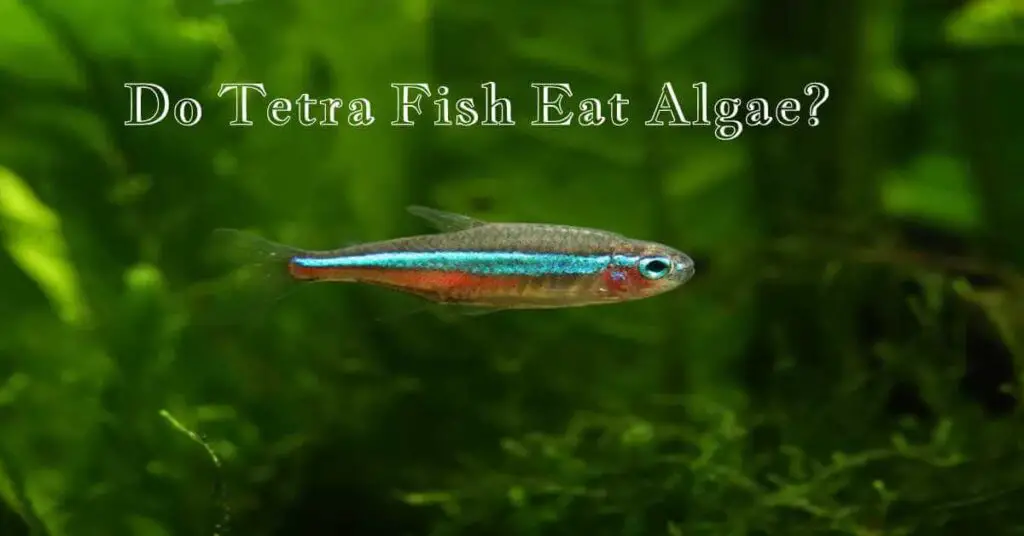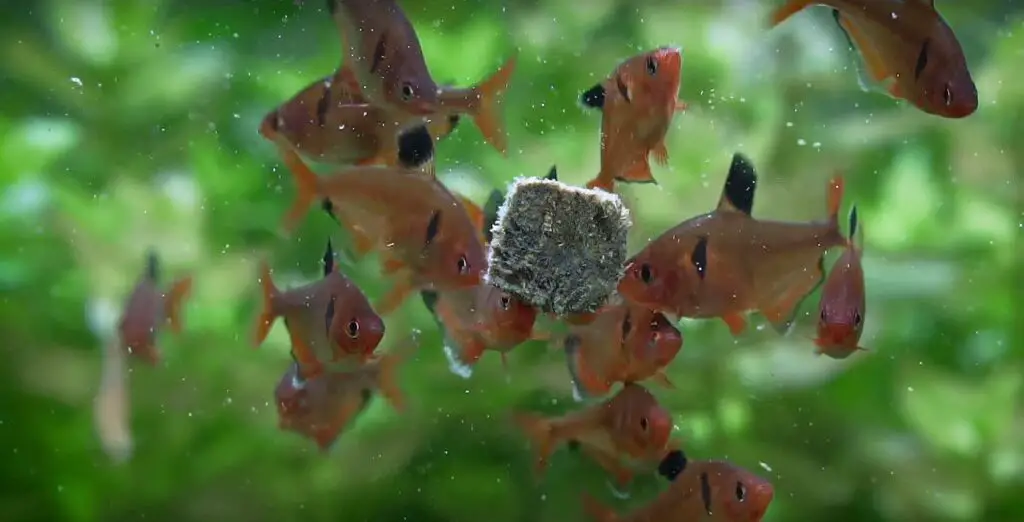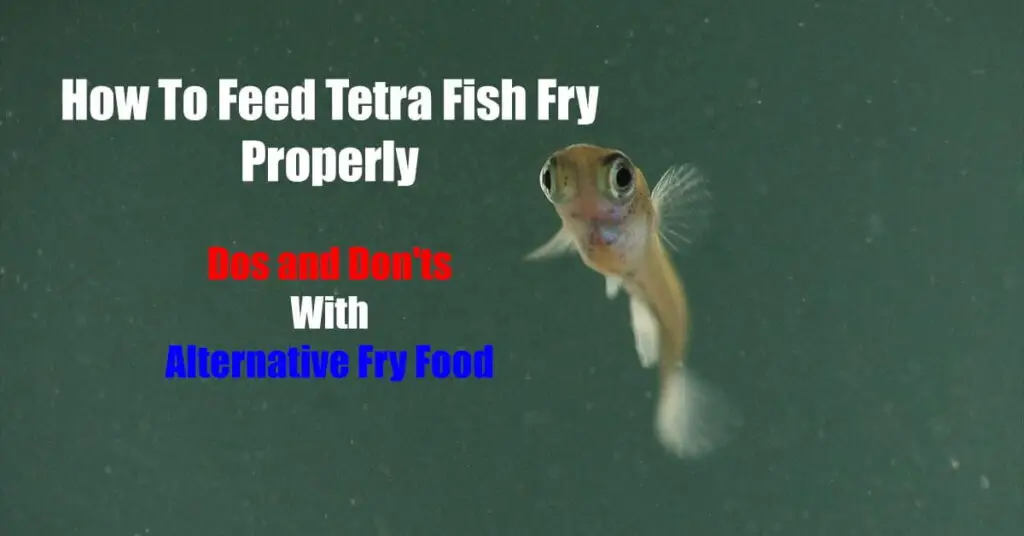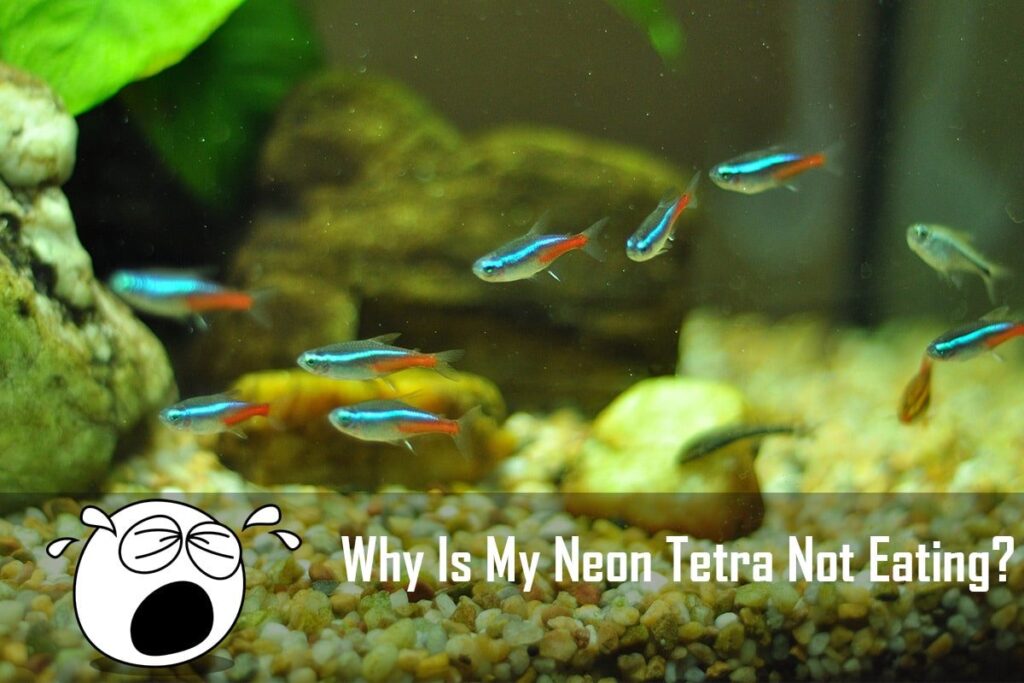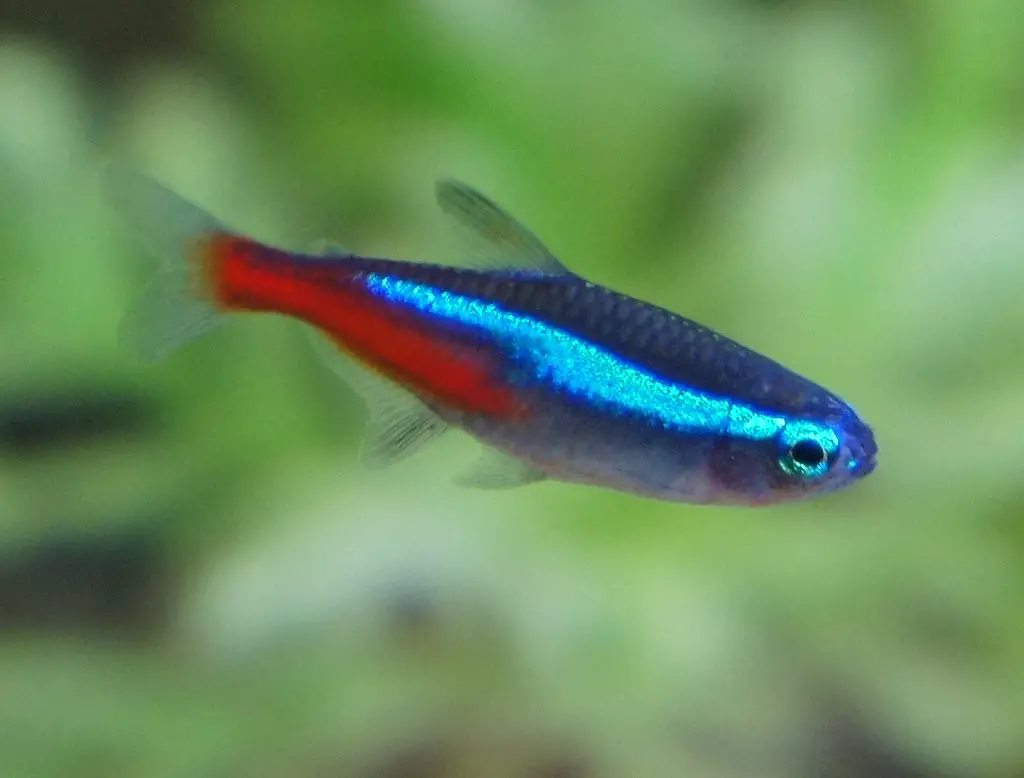This article is about one of the aspects of tetra fish. I think this fish is quite common among fish lovers like you. Moreover, in this article, I am going to answer the question of whether your tetra fish eat algae or not. Most of you might have doubts and tension regarding your tetra fish eating algae. As algae are considered to be a hindrance to an aquarium.
So, I will try my best to clear your confusion regarding your tetra fish eating algae as their food. For this, you have to read until the end of this article. I hope you stick with me.
Let me give you a basic introduction to tetra fish. Tetra fish is a common fish among fish lovers. It is a small and colorful fish that is native to Africa, Central America, and South America. This fish is usually kept in a freshwater aquarium. Tetra always stays in school(group) and also move in a group. Also, it is easy to care for and friendly fish. So, tetras are perfect for the beginning aquarist. This fish is also easy to feed and willingly accept the food you provide them.
Do Tetra Fish Eat Algae?
The answer is YES. Yes, tetra fish do eat algae.
Tetra fish are omnivores. So, they eat both small grasses and worms. In the wild, tetras live in freshwater rivers, clear and blackwater streams. And, in the blackwater streams, tetra fish usually eat algae, small insects, larvae, and dead plants.
While in the home aquarium, tetra fish are usually fed Algae Wafer vegetables and blood worms. These food are canned food and they like it as much as we like canned food.
Tetra requires meat in their food for protein. But they also require plant which includes algae, as plants contain fiber which is good for their digestive system.
Therefore, it is clear that tetra fish eats algae. If tetra fish eat algae it also helps to keep the aquarium clean.
Tetra Fish Diet
Tetra fish also requires a balanced diet like we human. The balanced diet includes protein, carbohydrates, fat, vitamins, calcium, and other nutritional elements. This will also help to keep your tetras colorful and healthy.
In their natural habitats like rivers and streams, tetras can feed on a wide variety of foods available and prefer. So, you should be able to provide them both plants and meat in their diet for their good health.
You should normally feed tetras foods like food chips, flakes, frozen food which should be meat-based. Moreover, frozen foods that tetras enjoy are brine, shrimps, mosquito larvae, bloodworms, fruit flies, and micro worms. But don’t forget to include plants and live foods too.
Also, remember not to overfeed your tetras. You should feed your tetra fish twice a day. The feeding routine can be either day and evening or afternoon and night. You should be consistent about the feeding routine.
As tetra fish lives in the middle of the tank, they usually eat food from the surface of the water and ignore food on the surface. So, feed them food that floats on the surface of the water.
You should feed tetra fish the right amount of food that they can consume in three to five minutes. But it also depends upon the size of the tetras. And if there is uneaten food left in the tank you need to remove it. If it is not removed it turns in to harmful chemicals like ammonia which is harmful to your tetra fish.
If you want colorful and healthy tetra fish that will brighten up your aquarium, feed them proper diet food. Tetra fish also eat algae as their food.
All About Algae – Do Tetra Fish Eat Algae?
Algae are simple non-flowering aquatic plants. It includes seaweed and many single-celled forms. All algae contain chlorophyll and they prepare their food with the help of photosynthesis.
Algae lives in freshwater or saltwater. Some algae are freely floating in the water while some are attached to the bottom.
Due to chlorophyll algae appears green in color. But due to other accessory pigments in addition to chlorophyll they can appear brown, yellow, or red.
Algae lack roots, stems, and leaves characteristics of vascular plants. Some algae are unicellular and some are multicellular.
In the aquarium, algae are considered a nuisance. But we can’t deny the fact that it is a source of food for many aquatic animals including tetra fish.
Can Neon Tetra Control Algae?
Yes, Neon Tetra can control algae to some extent. Since Neon Tetra is omnivores, they feed on algae, plants along with other meat-based products. But Neon Tetra only will not be able to control algae. You need to have other backups as well.
13 Most Common Types Of Algae
Black Beard Algae
It is a type of red algae. This alga is common in both freshwater tanks and saltwater setups. It grows in dense patches and looks like a patchy beard. It is soft, slippery, and hard to remove from the tank.
Black Beard Algae eaters are Siamese Algae Eaters, Amano Shrimp, Florida Flag Fish.
Blanket Weed
Blanket Weed is considered to be the toughest algae to remove from your tank. It looks like a tough, green, wool-like mat. These algae attach themselves to hair grass, substrate, and hardscape item.
Blue-Green Algae
Blue-Green Algae is also called nitrogen-fixing bacteria. As it will use the nitrogen in your tank. This is not a true alga. It is an aquatic cyanobacterium.
Brown Algae
Brown Algae can be found in both freshwater and marine aquariums. It is a form of diatoms that obtains nutrients from photosynthesis and chemicals like nitrate, silicate, and phosphorous.
Some of the best brown algae eaters are Otoncinclus Catfish, Plecoctomus, Yellow Tangs.
Fuzz Algae
Fuzz Algae are short green algae. It has a fuzzy appearance so it is called Fuzz Algae. Also, it grows as an individual filament.
Fuzz Algae Eaters are Siamese Algae Eaters, Amano Shrimp, Otoncinclus, Black Mollies, and Bristlenose Plecos.
Green Aquarium Water Algae
These algae are found in freshwater aquarium. It will turn the tank water into the pea-soup green. And make the aquarium look terrible. But it is not toxic to your fish.
Green Aquarium Water Algae Eaters are Snails and shrimps.
Green Dust Algae
It is commonly found in freshwater aquarium. The algae will form a green slime covering the glass of the aquarium.
Green Dust Algae Eaters are Bristlenose Pecos.
Green Spot Algae
These algae will form hard green spots on your glass, equipment, slow-growing plants, and decoration. In the beginning, it will appear as tiny spots only, but the spot will widen making large coats.
Green Spot Algae Eaters are Sun snails and Nerite Snails.
Hair/Thread Algae
Hair algae are usually found in freshwater aquarium. It is a long green thread-like structure. It is called hair algae because it feels like wet hair when taken out from tank water.
Hair/Thread Algae eaters are Amano Shrimp, Dwarf Shrimp, Mollies, Siamese Algae Eaters, and Florida Flag Fish.
Oedogonium Algae
It is a free-floating and short green filamentous alga. But sometimes it can get attached to your plants and give a fuzzy appearance.
Oedogonium Algae Eaters are Amano Shrimps, Rosy Barbs, and Mollies.
Rhizoclonium Algae
It looks like fine green and brownish strands which are soft and slimy. Also, it is somewhat similar to hair algae.
Rhizoclonium Algae Eaters are Amano Shrimp.
Spirogyra
Spirogyra is a filamentous green alga. It is fine bright slippery strands. Spirogyra forms fast and spreads all over the aquarium.
Spirogyra Algae Eaters are Rosy Barbs.
Staghorn Algae
Staghorn Algae belong to the group of red algae. It looks like a horn of the stag. And it attaches itself to plant leaves, decorations, and equipment.
They are not eaten by most aquatic animals.
How Does Algae Grow In An Aquarium Or Water?
The common reasons for algae growth in your aquarium are:
- Nutrients imbalance
- Lighting
- Lack of water changes
Is Algae Good For Your Tetra Fish?
Your tetra fish will get the vibrant beautiful colors from algae. As algae are rich in vitamin A. And vitamin A is responsible for your tetras bright and beautiful shine.
How To Control Algae Growth?
Too many algae can cause harm to your aquarium. So here are some ways by which you can control algae growth.
- Reduce lighting
- Avoid overfeeding
- Perform frequent water changes
- Know your water
- Clean your tank
- Keep live plants
- Pet algae eating fish
How To Clean Algae From Your Tank?
You need to remove algae if it is causing harm to your algae. So, here I will be sharing some ways in which you can clean algae from your tank.
Things that are required to clean your tank:
- Algae scraper/pad
- Razorblade (plastic blade for acrylic tanks)
- Bleach
- Water siphon (gravel vacuum)
- Bucket (use a new bucket that is for aquarium use only)
- Lime remover/glass cleaner (made for aquariums)
- Filter media
- Filter brush
- Old bath towels
- Paper towels
- Chlorine remover (aquarium water conditioner)
You should clean your aquarium in the following order:
- Firstly, clean the inside glass.
- Then, clean the decorations like rocks and plants.
- Next, clean the gravel.
- Then, clean the outside glass and fixtures.
- Finally, clean the filter after a week.
Bad and Good Aspects Of Algae
Good Aspects
Not all the algae are bad for the aquarium. Some algae are good for your aquarium’s ecosystem. As algae are consumed by many fish including tetra and invertebrates living in the aquarium. Furthermore, some algae are attractive looking and make your aquarium look more natural.
It also filters out harmful chemicals like nitrates, phosphorous, and ammonia from your tank. As these chemicals are harmful to your fish.
Moreover, algae provide vitamin A for your fish. And that Vitamin A is responsible for the bright and beautiful shine on your fish.
Brown algae and green hair algae are the most common and beneficial algae.
Bad Aspects
Algae will use the dissolved oxygen in the tank. This reduces the available dissolved oxygen in the water for the fish.
Also, algae use nutrients of the water just like the aquarium live plants. And too many algae can cause imbalances and make the tank look dirty.
Furthermore, Staghorn or Brown Algae are bad for your tank. These algae are not eaten by your fish. And the growth of this algae indicates that your tank is in bad condition.
Are Plants And Vegetables Good For Tetra Fish?
Yes, plants and vegetables are essential as a Tetra fish diet. Fish are not able to produce carotene which is an essential vitamin needed for the production of vitamin A. And fish will receive carotene from plants, vegetables, and algae. Vitamin A is important for fish. All those bright, beautiful colors of your fish are due to Vitamin A.
Read Full Article on: Tetra Fish Diet | What do Tetra Fish Eat: A Complete Guide
Furthermore, plants and vegetables are rich with fiber which is good for your fish digestive system.
What To Feed Your Tetra Fish?
You need to feed your tetra fish foods rich in protein, carbohydrates, phosphorous, calcium, and fats. Also, include both meat and plant products in tetras’ diet.
The different types of food that you need to feed your tetras are:
Prepared foods
Pellets, flakes, wafers are some of the commonly used prepared foods available in the market or fish shops.
Pellets are of high quality and commonly used prepared foods. The ingredients used are more natural. Due to its shape and texture, you will know how much you are feeding your fish.
Two common pellets in the market are floating pellets and sinking pellets. As tetra feeds on the surface, it is better to feed them floating pellets. It is also easy to remove uneaten food from the surface.
Flakes/wafers
Fish flakes are used less in comparison to pellets. There are different kinds of flakes available but feed tetras those flakes which contain diet as in the wild. You must feed tetra fish meaty flakes with vegetable matters. Avoid feeding flakes that contain fillers such as wheat instead of meat.
Moreover, you must feed the right amount of flakes. As overfeeding the fish will lead to uneaten food. Also, the flakes are heavy and they sink at the bottom which will decay. This will make the tank dirty.
Freeze-dried foods
Blood worms or mosquito larvae are freeze-dried foods. It contains more nutrients than prepared foods. You should only feed freeze-dried foods 3 times a week to your tetra fish. As this food is a little hard to digest for your tetra fish.
Live foods
Live foods are best for tetras as they are fresh and nutritious. Brine shrimp, micro worms, fruit flies, mosquito larvae, daphnia, and other small insects are some live foods liked by tetra fish. But they are expensive and you must be careful if you get it directly from the wild as it might contain parasites.
Frozen foods
You can also feed your tetra fish frozen foods. They are easily available in the market. But you should wait for the food to defrost before feeding it to the fish. Frozen foods are not so expensive but contain nutrients like live food. It can be fed as treat to your tetra fish.
Plants
Include plants in the tetra fish diet. Also, tetra fish eat algae. So, tetra fish will receive the necessary ingredient from it as well.
How Often And How Much To Feed Your Tetra Fish?
You should feed tetra fish twice a day. You can set the feeding routine for either day and evening or afternoon and night. The routine should be consistent as the tetra fish adapts themselves to that particular routine. If you fluctuate the routine frequently it can stress your tetra fish.
You should be very punctual about feeding tetra fish for their good health. Or you can use an automatic feeder where the time and amount of food to give can be adjusted.
You should feed your tetra fish the amount of food that they can finish in three to five minutes. Also, don’t forget to crush the food if it is too big for your tetra fish to swallow. The amount of food the tetra consumes can also depend upon the size of tetra fish. Furthermore, you can monitor how much they consume and how much it takes them to finish it. After that feed them accordingly.
Algae Eating Fish That Get Along With Tetra Fish
Algae eating fish are called algivore. Although tetra fish are friendly fish, most of them are small and cannot handle brutal tankmates. So, you should be careful while selecting algae eating fish that can be kept with tetra fish. As some algae eaters can harm small and delicate tetra fish. Tetra fish eat algae. Let’s know which fish eats algae other than tetra fish.
Here are some of the algae-eating fish that get along with tetra fish:
- Suckermouth Catfish
- Otocinclus catfish
- Peckoltia vittata
- Bristlenose Pecos
- Siamese Flying fox
- Siamese algae eaters
- Hillstream Loaches(Borneo Plecos or Butterfly Plecos)
- Amano Shrimp
Frequently Asked Questions
Is It Okay For Your Fish To Eat Algae?
Yes, it is completely fine for your fish to eat algae. Algae are similar to plants. So, they will consume it as a vegetarian diet. Also, algae provide vitamin A to your fish which is responsible for the bright and beautiful colors of your fish. Moreover, algae are rich in fiber which is good for your fish digestive system.
Which Invertebrates eat algae other than tetra fish and other fish?
Snails and Shrimps are the two invertebrates that eat algae other than tetra fish and other fish. If you want to get rid of unwanted algae you should pet snails and shrimps.
Some algae-eating snails are Nerite Snail, Ramshorn Snail, Mystery Apple Snail, Malaysian Trumpet Snail, and Rabbit Snail.
Some algae-eating shrimps are Amano Shrimp, Cherry Shrimp, Ghost Shrimp, and Bamboo Shrimp.
Is Too Much Algae Bad For Fish?
Everything too much than needed is harmful. It is the same in the case of algae. Algae use oxygen from the tank and if there are too many algae then all the oxygen is used by algae. Then there will no oxygen left for your fish. This will cause illness in the fish and in some cases, the fish can also die.
Conclusion
Most of the fish including tetra fish will eat algae. In the above article, I have mentioned all the information about tetra fish eating algae as their food. I hope this article makes you clear about whether or not tetra feed on algae.
